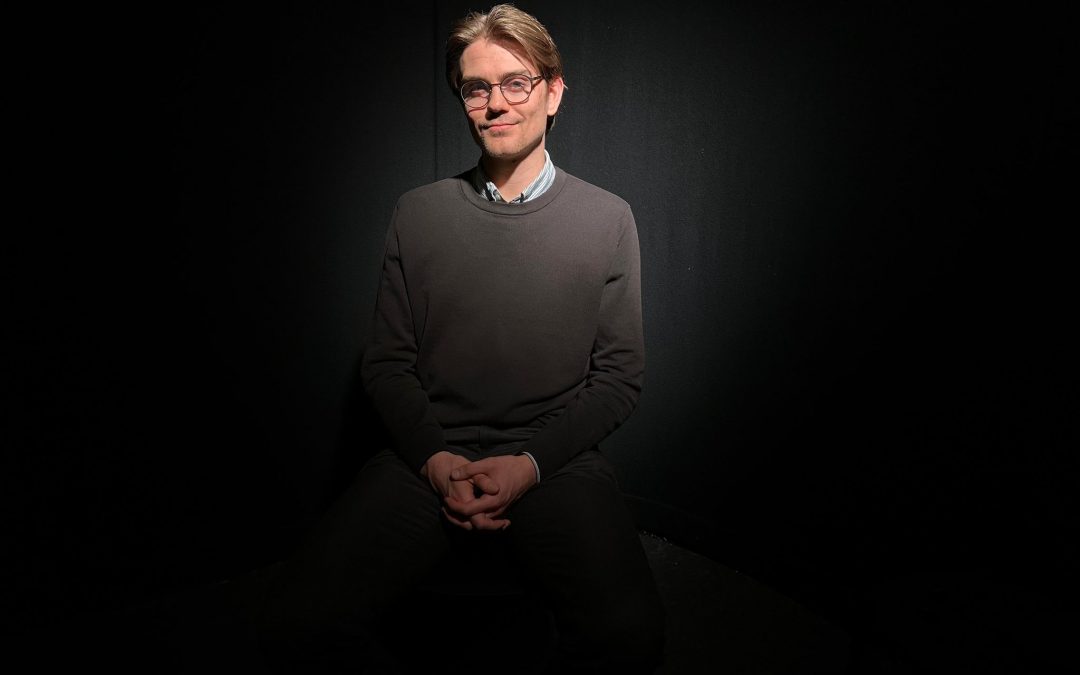Snorre Alvsvåg, a Master’s graduate in Information Science from Sotra, has built an impressive career path. Starting as a research assistant at SFI MediaFutures in 2021, he moved up to a full-time developer position at Norway’s commercial public service broadcaster, TV2, in only three years.
Back in 2021, Alvsvåg laid the technical groundwork of SFI MediaFutures under the guidance of center leader Christoph Trattner. His responsibilities ranged from managing GitHub repositories to setting up demo walls, all while facilitating seamless communication with partners. “I established also the cloud infrastructure and systems for data sharing with our user partners,” Snorre recalls.
His role at MediaFutures brought him into regular contact with industry partners, including TV2. Initially focusing on data transfer and communication, Snorre soon found himself immersed in the world of recommender systems through collaborative projects with for example PhD student Anastasiia Klimashevskaia.
A Hybrid Solution for TV2 Play’s Recommender System
After completing his Bachelor’s degree in Information Science, Snorre pursued a Master’s degree, impressively writing his thesis in just one month. In his thesis, “Addressing the Next-Poster Problem: A Hybrid Recommender System for Streaming Platforms,” he explored the combination of Collaborative Filtering (CF) and Sequence Aware approaches for TV2 Play’s recommender system. Snorre identified a common shortfall in traditional recommender systems: they often overlook the significance of recently watched content, which he termed the “next-poster problem.”
“Through an online evaluation on TV 2 Play, I demonstrated that using a Hybrid approach to address the next-poster problem results in a decrease in user engagement metrics like click-through rate (CTR) but an increase in meaningful clicks, leading to higher user satisfaction,” Snorre writes.
In essence, Snorre adapted the Sequence Aware approach, typically used in music recommendation, to movie recommendations and integrated it with the CF method. In the Sequence Aware approach, the order of content consumption is crucial. A user’s “click history” reveals patterns in behavior, which is especially important when data is sparse. Unlike CF, which requires data from multiple users to find similarities, the Sequence Aware approach can operate with data from just one user.
Collaborative Filtering (CF) works on the principle that users who have had similar preferences in the past will continue to do so. This method identifies similarities between users based on their previous likes.
Snorre’s objective was to test the effectiveness of a recommender system that considered recent user behavior, finding that it often led to higher user satisfaction. He conducted offline evaluations to select the best model and followed up with online evaluations to assess performance.
Snorre received significant support from MediaFutures partners Lars Skjærven and Astrid Tessem in coding and dataset mining, respectively. Early access to TV2 data and academic guidance from co-authors Alain Starke and Professor Christoph Trattner were also crucial to his research.
Transitioning to TV2
Through his work in MediaFutures, Snorre encountered several of the industry partners, one of these being TV2. For him TV2 was the place to aim for as it was the only company working on recommender systems for movies, and not just news.
After originally applying for a job as a Data scientist, he ended up with a successfull job interview for the position of a Backend Developer. Whilst this engagement was meant to be a full time job, Snorre still needed to finish his master, and therefore began working part-time at TV2.
“I could not work full time in the beginning, but it was definitely an advantage to write about and with an industry partner which I also work for.”
By that he could test his theory from the thesis directly in TV2 Play for ten days. “The goal is to continue working on this project at TV2,” he says.
Reflecting on his journey, Snorre acknowledges the unique opportunity to interact with the industry early in his career.
“MediaFutures was my entry point to a 50% position at TV2. Being hired that early is uncommon. I believe that the ability to engage with the industry was beneficial.”
Now, Snorre is contemplating pursuing a PhD within the industry, leveraging his experience and research to continue contributing to advancements in recommender systems.
In summary, Snorre Alvsvåg’s journey from MediaFutures to TV2 exemplifies the seamless integration of academic research and industry application, underscoring the potential for innovation in recommender systems within the domain of streaming platforms.
You can read his master thesis here.

